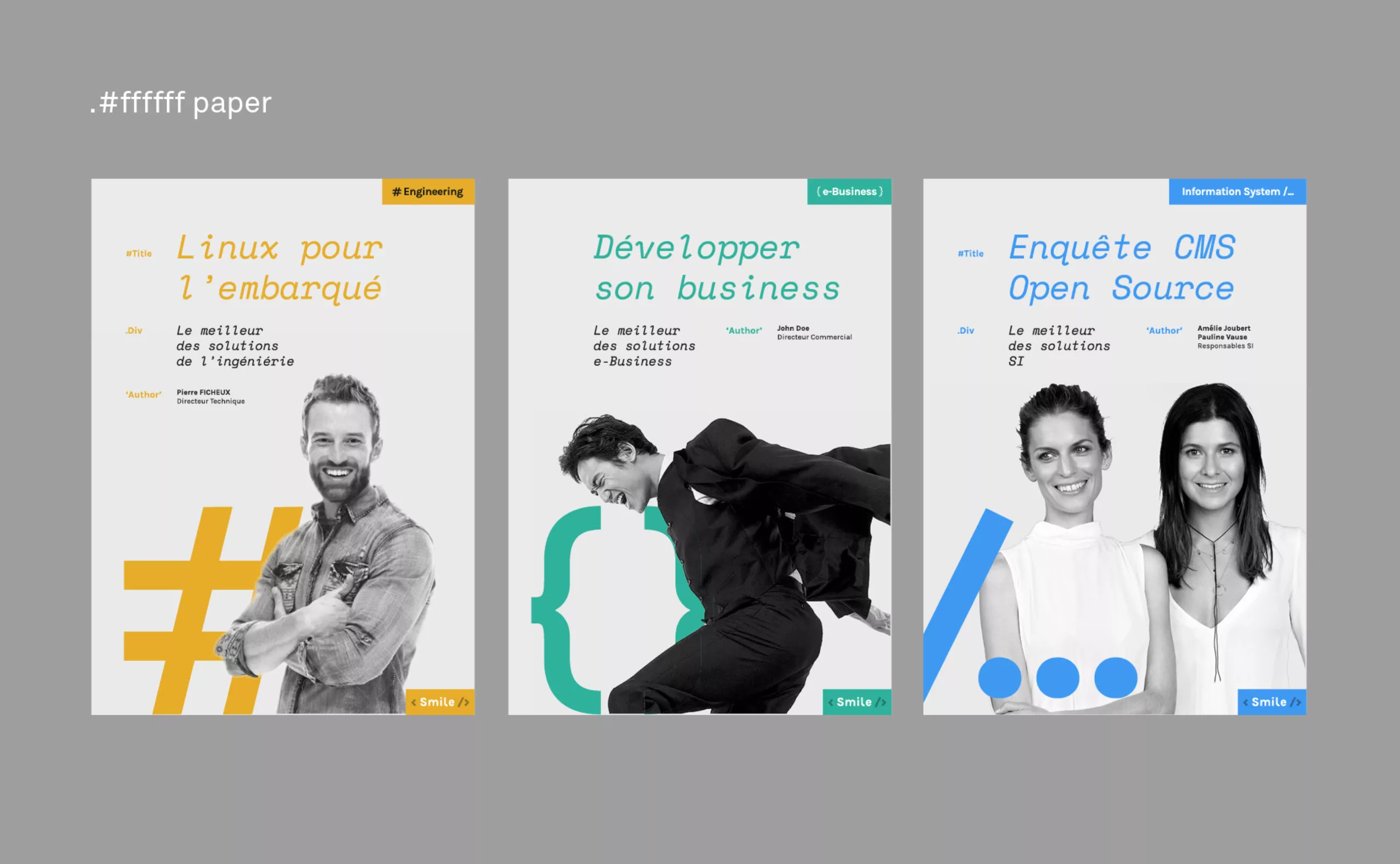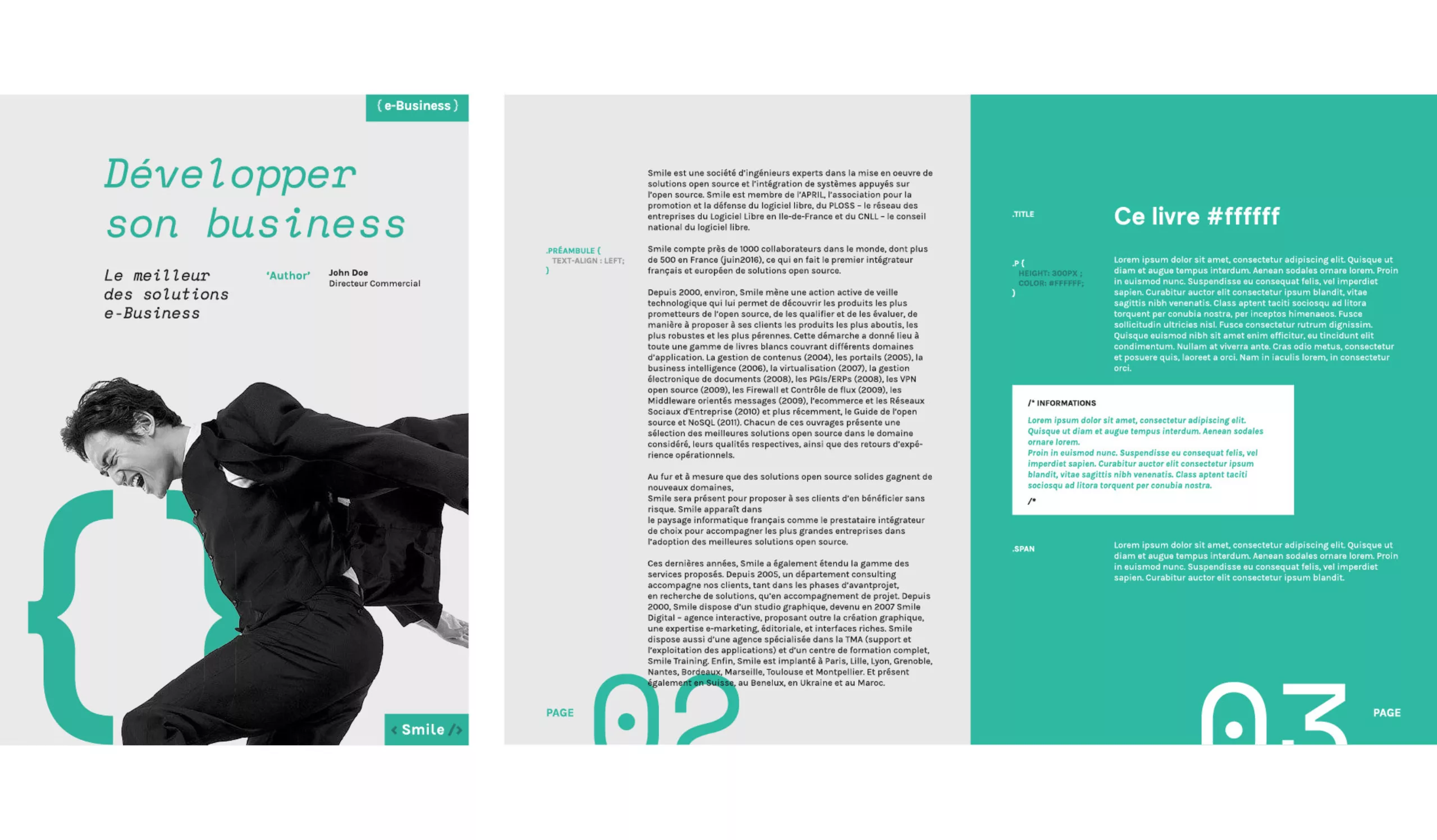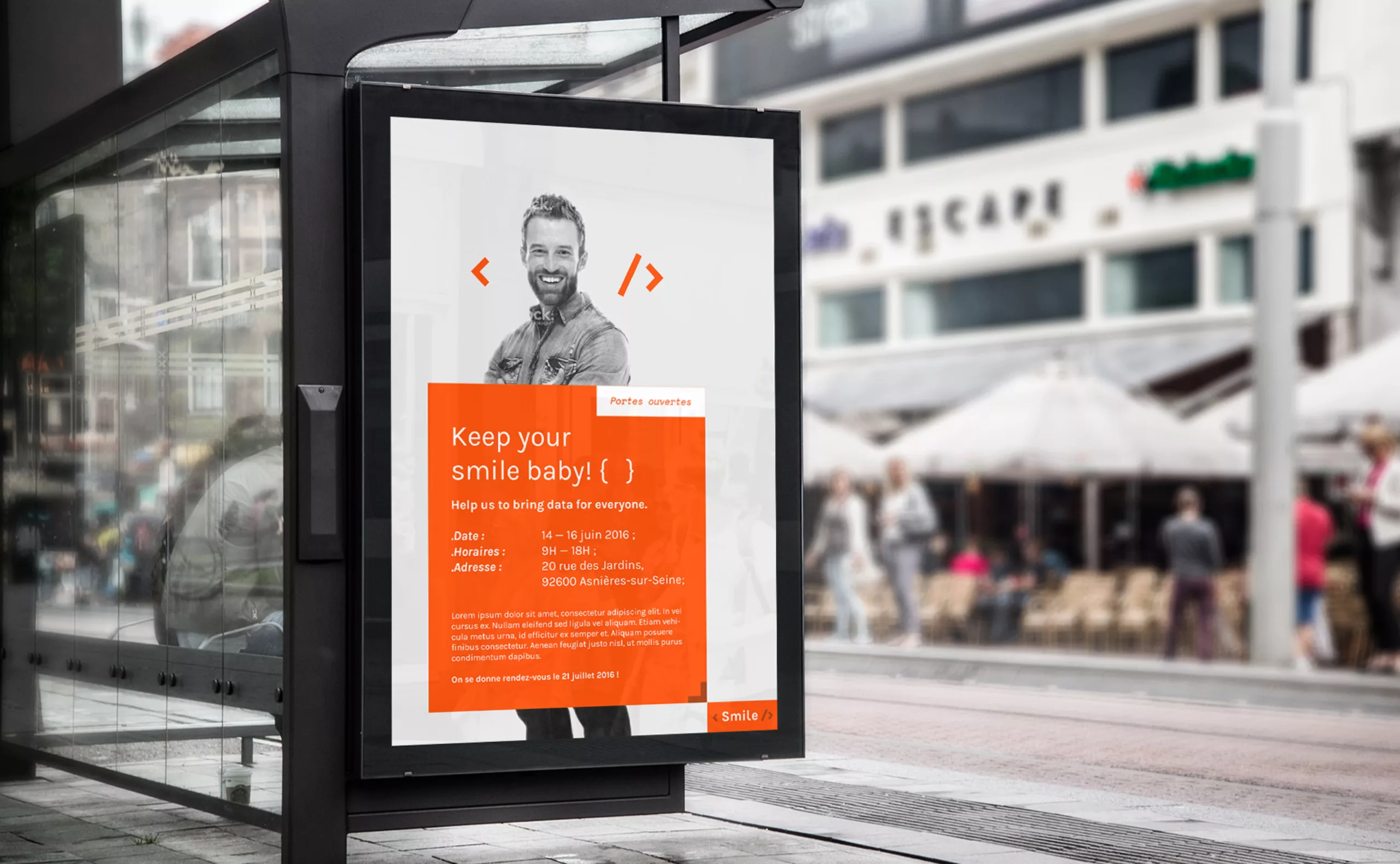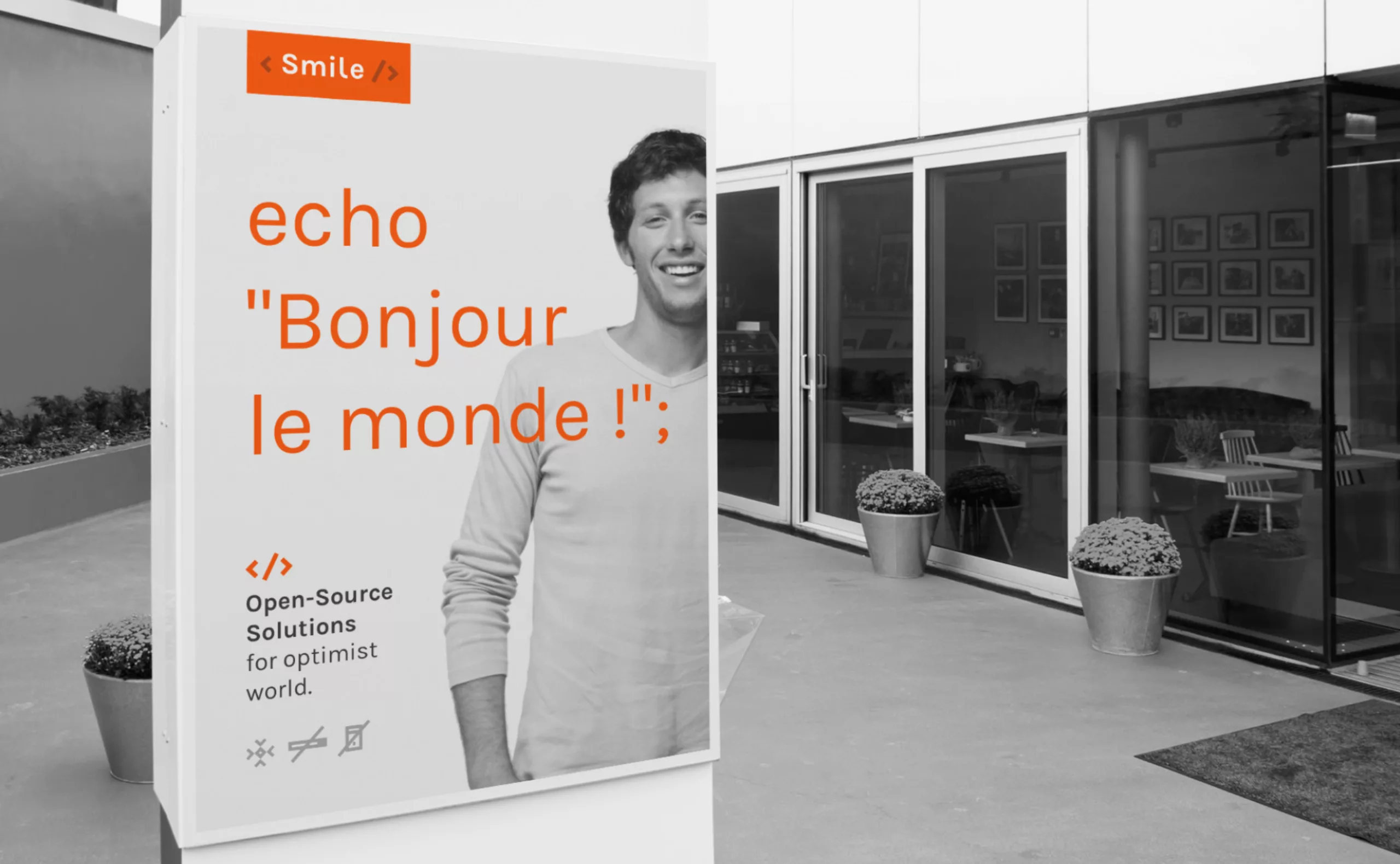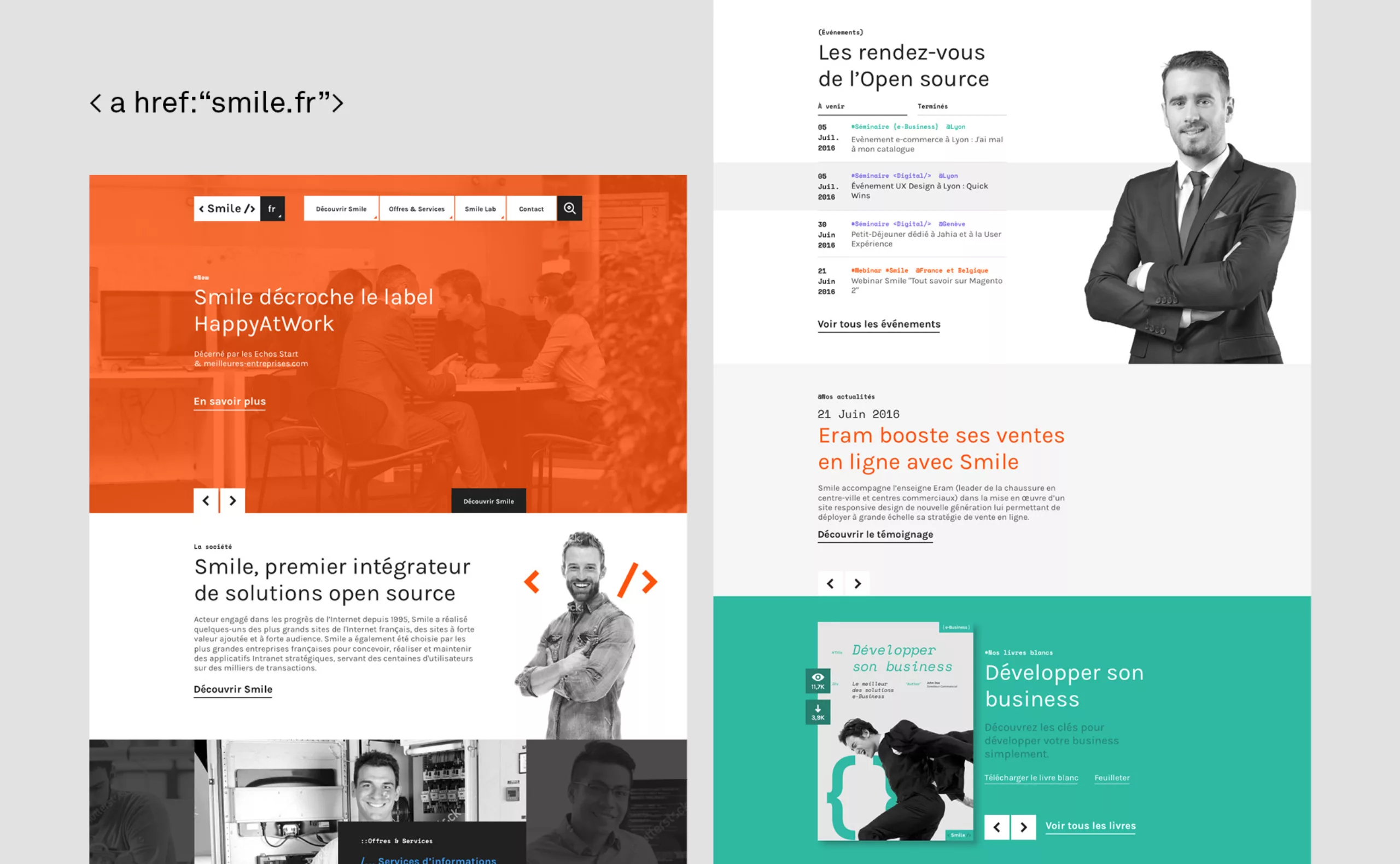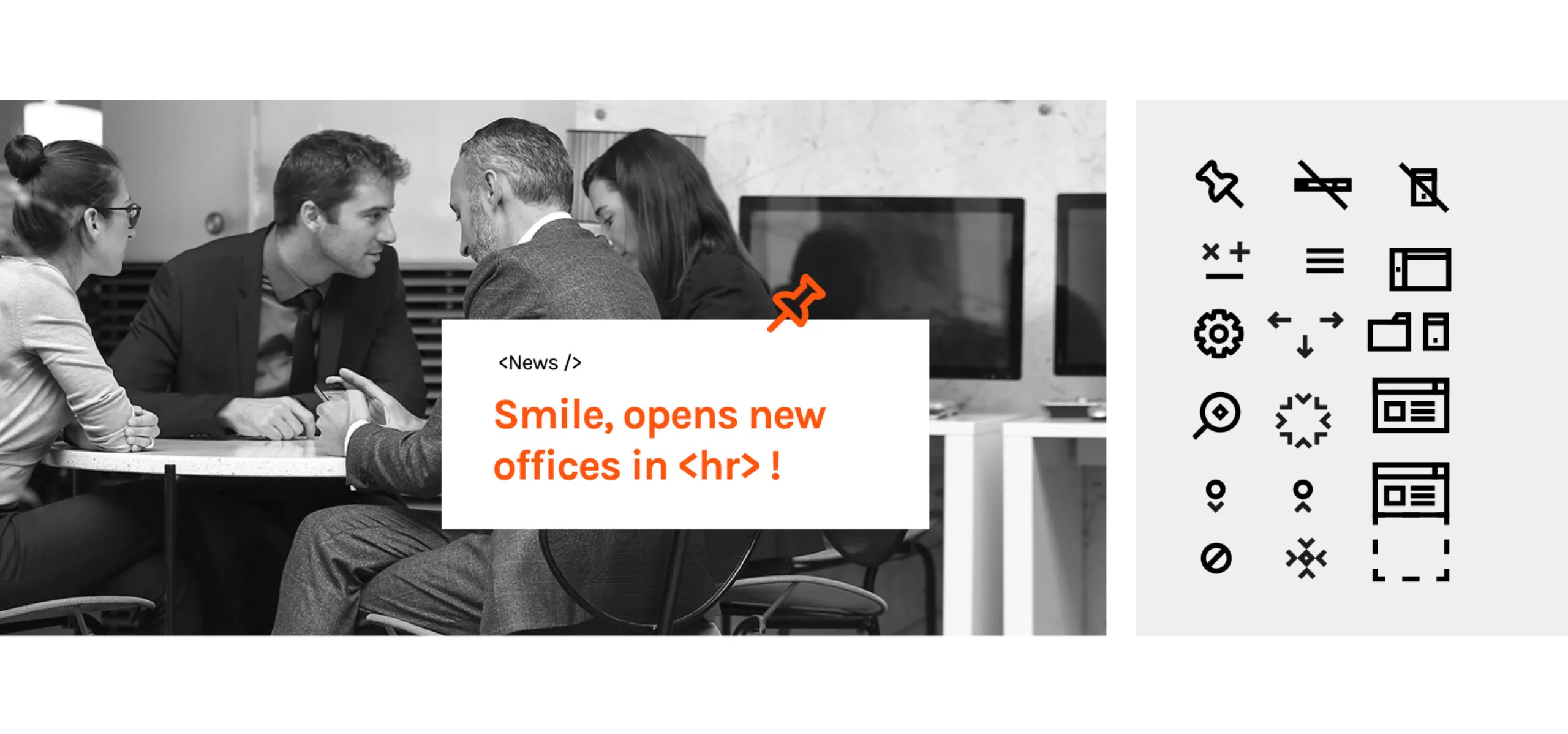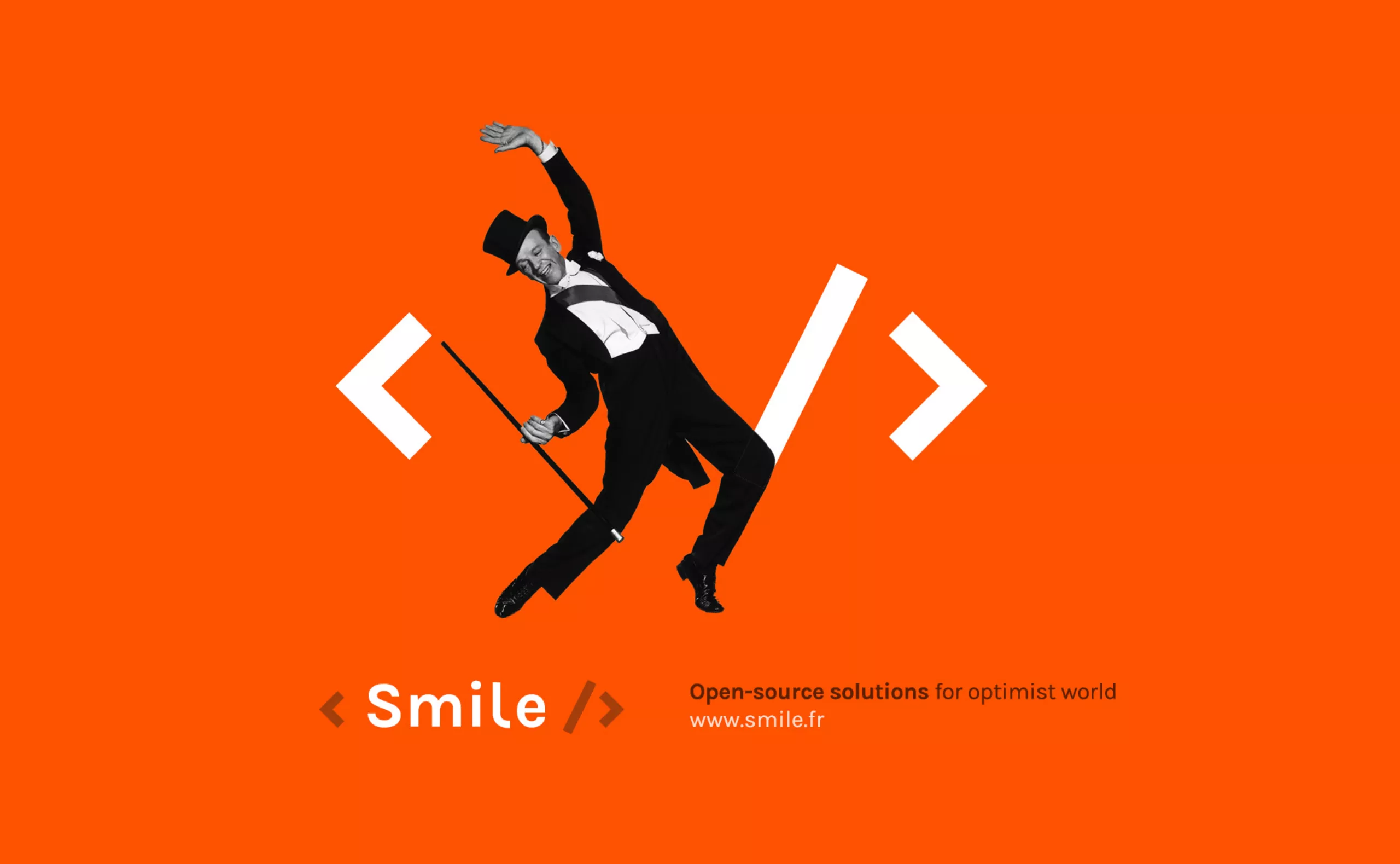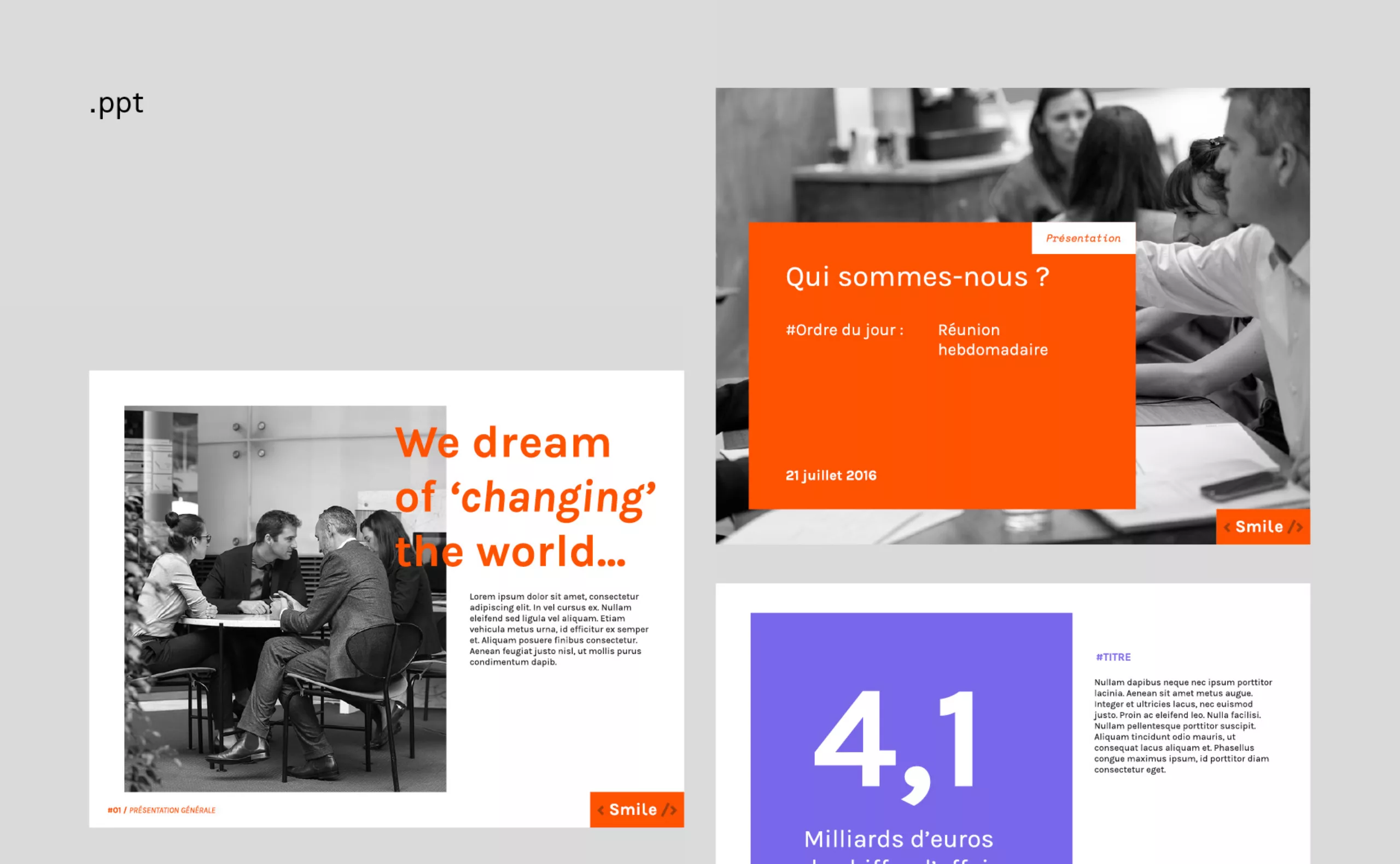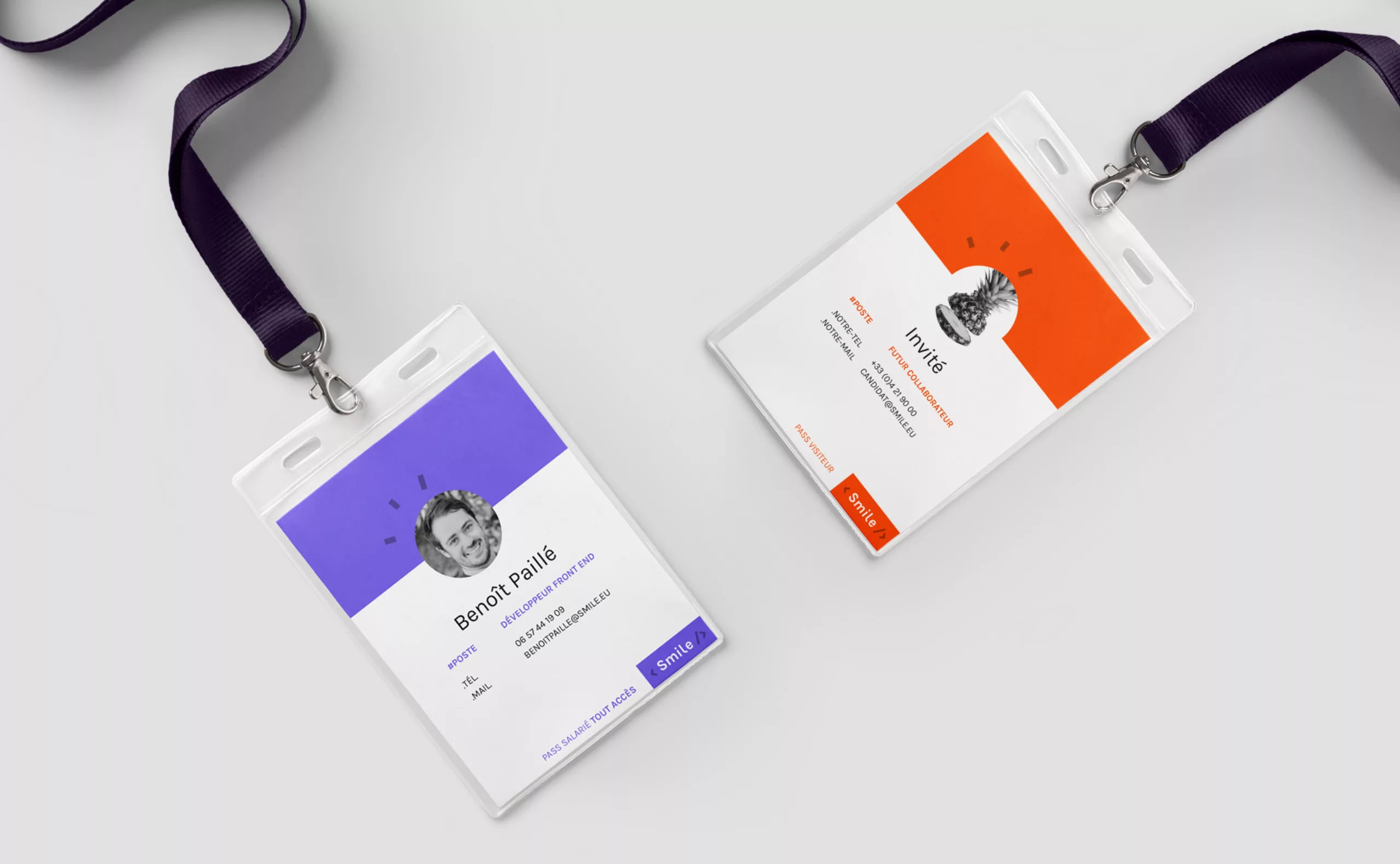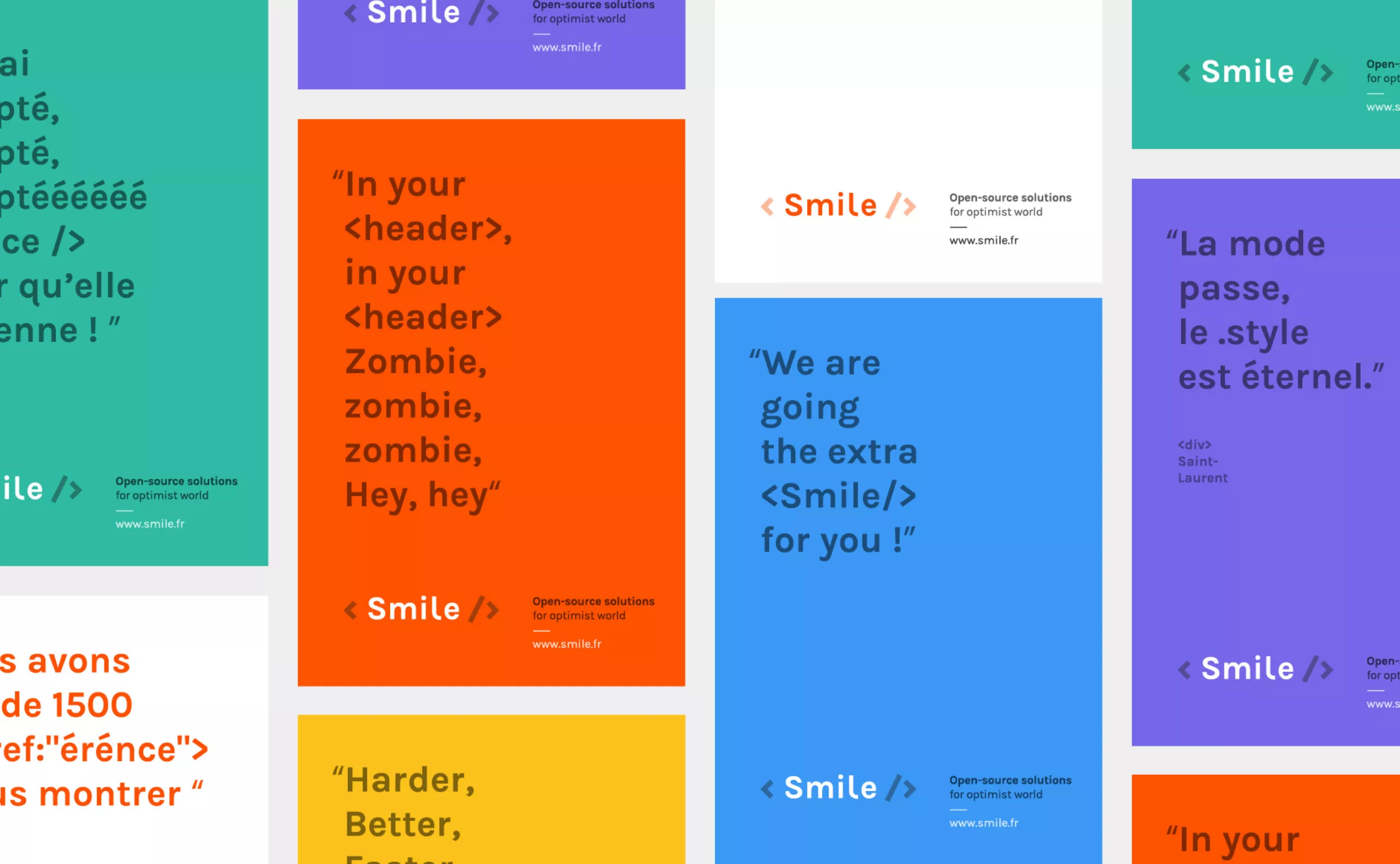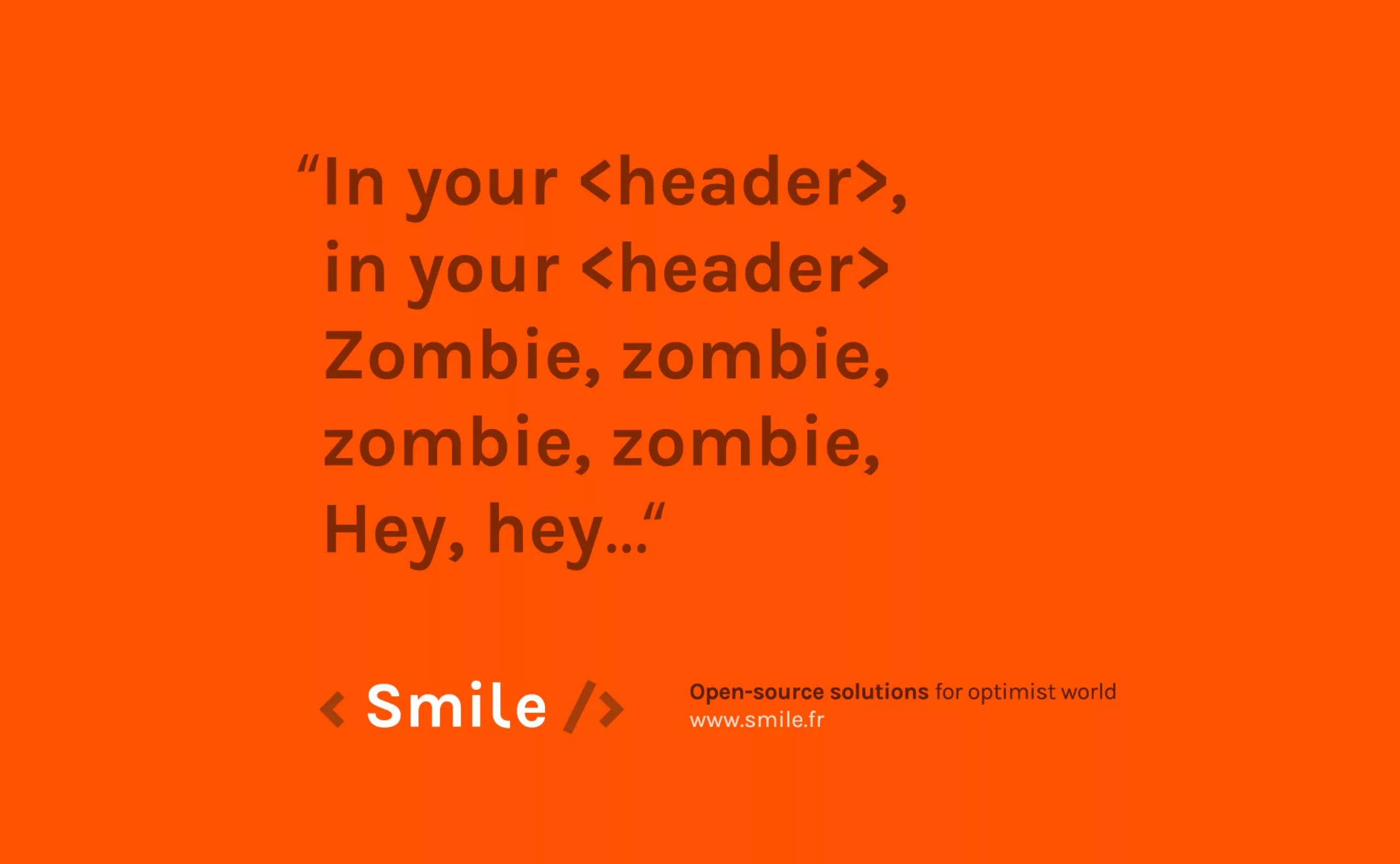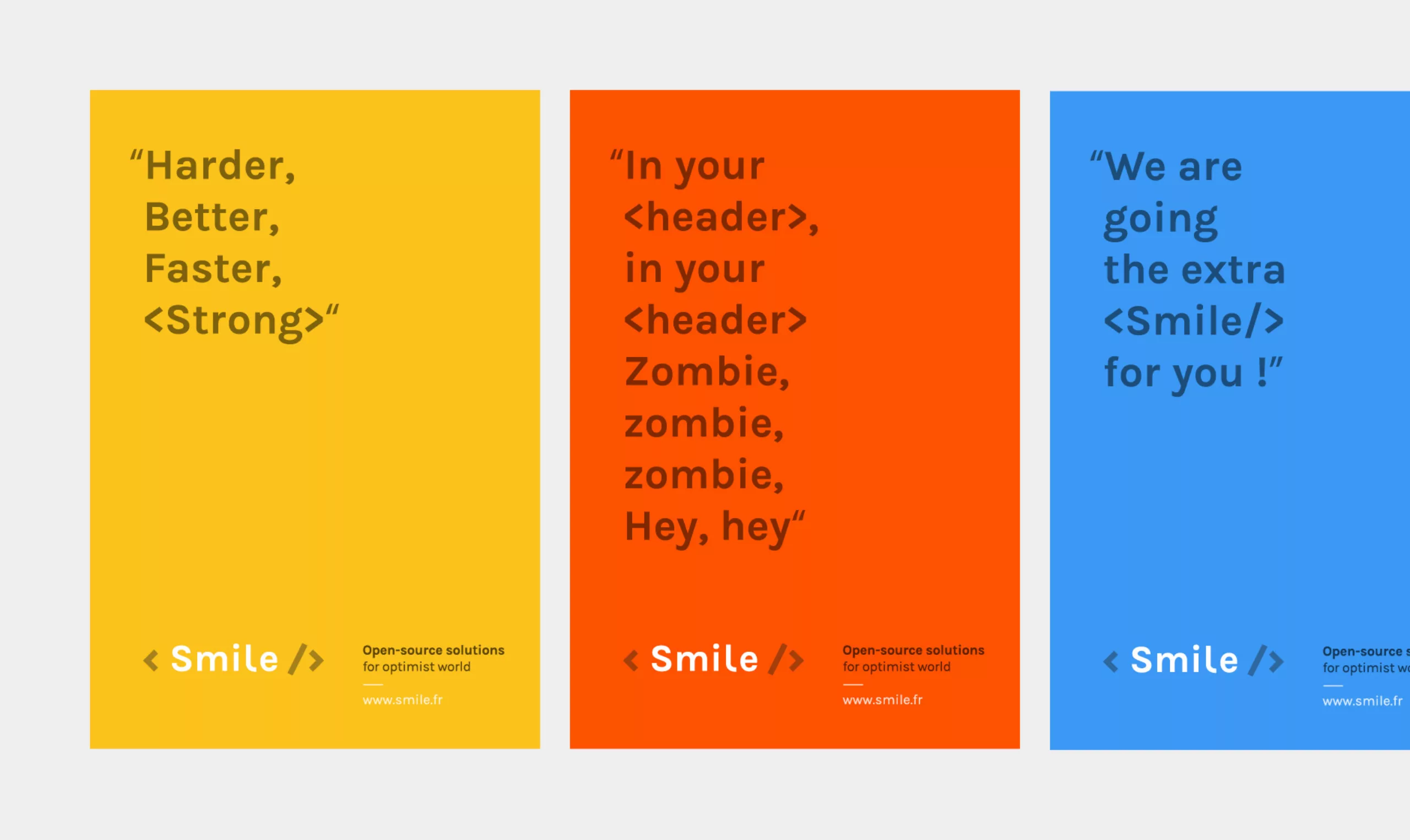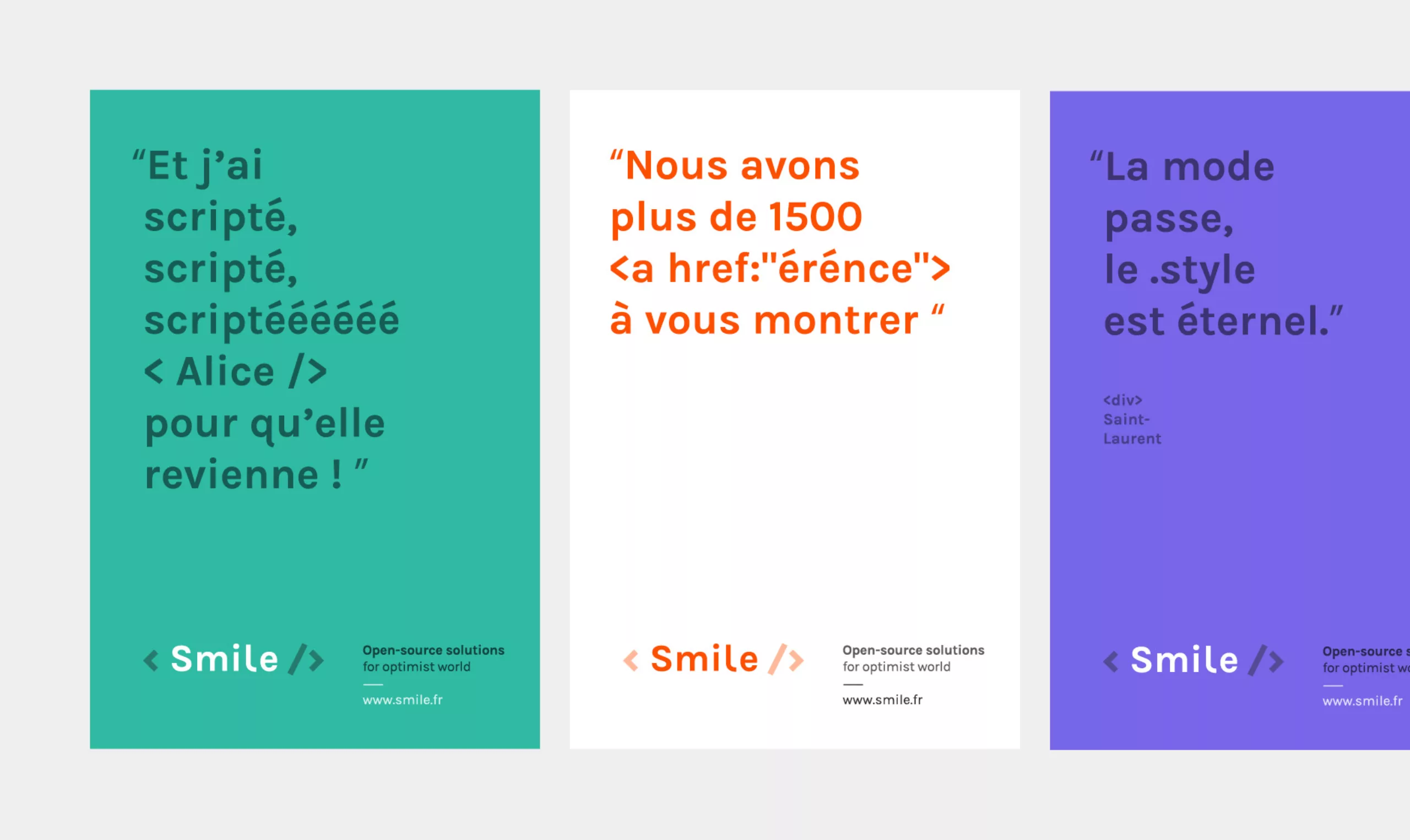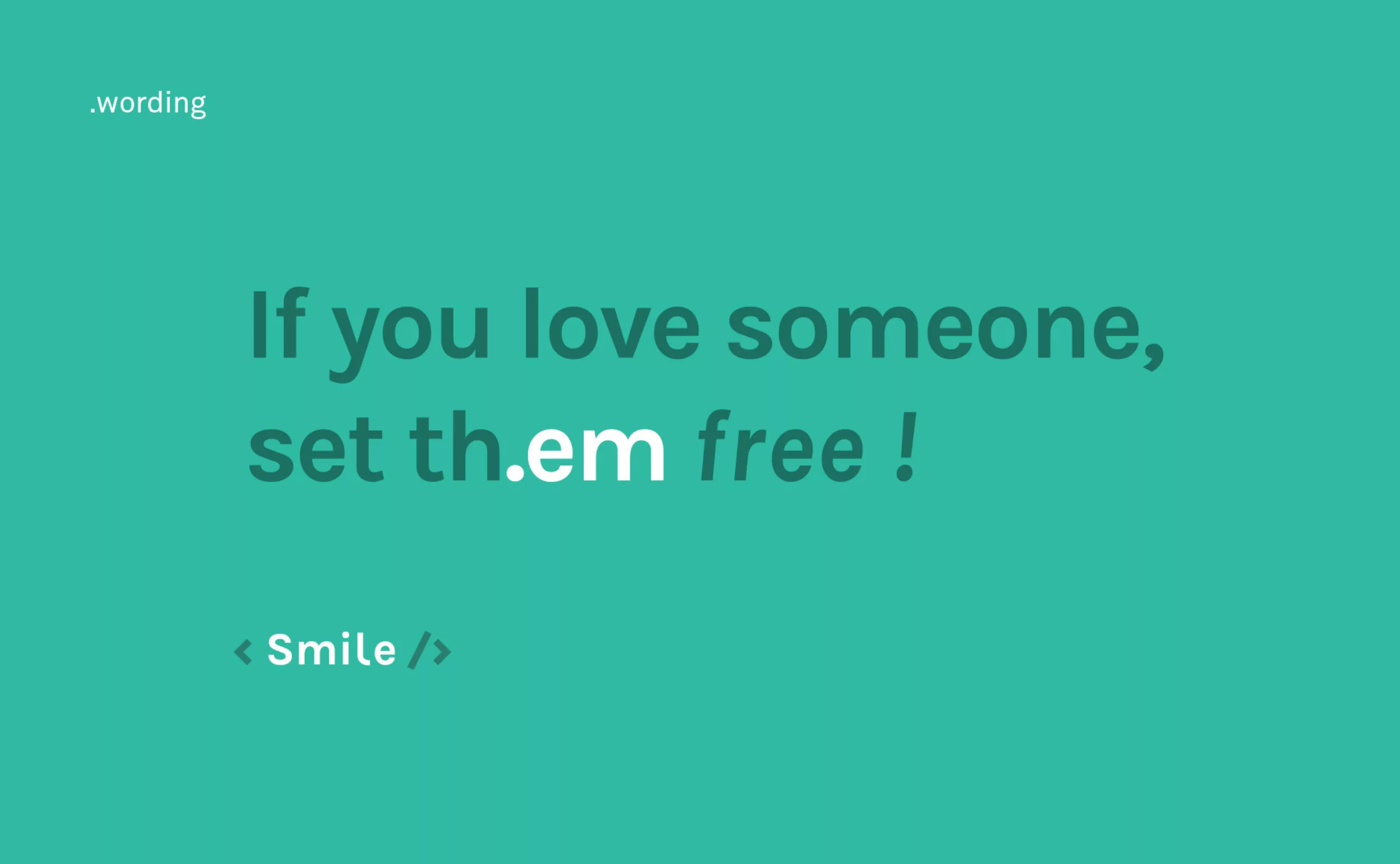A forerunner in digital technologies since 1991, Smile is the European expert in open source solutions. Smile provides consulting, design, integration and implementation services, as well as the deployment of open source solutions and the design and implementation of platforms based on open source products and tools. Smile has 25 years’ experience in open source, 1,200 employees and 18 agencies in Europe. In short, Smile has a great philosophy, a unique positioning in the world of IT services companies, and above all a great economic success story! In 2016, Smile embarked on a project to overhaul its visual identity. Here is the unsuccessful project we proposed at the time.
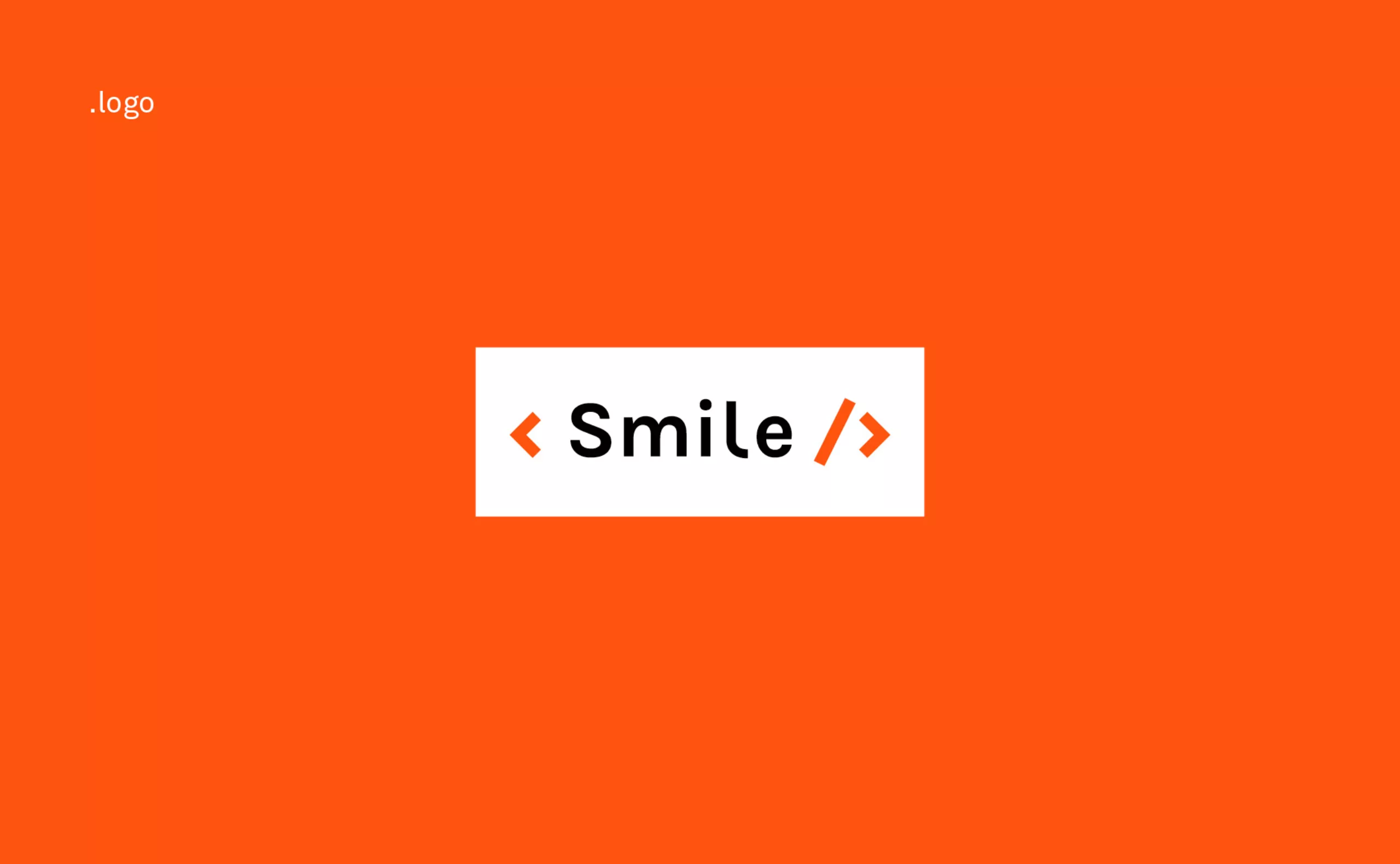
Brand your < Smile />!
Use your Smile to change the world!
Project not selected

Don’t let the world change your <Smile/> !
To begin with, there’s the name “Smile”. It’s the most beautiful promise there is. It’s a promise of humanity, benevolence, love, joy and sharing. All values associated with the world of open source. They are working to make the world more open, freer, more transparent – in short, to make the world a better place.
In order to position them as the world leader in open source solutions, we propose to materialise these values in the simplest of ways by creating a <Smile /> tag. In computing, a tag is a character, or a series of characters, used to structure a document and which will be invisible to the end reader, known as a ‘markup language’. We propose to make these tags visible, to reveal the source code so that code transparency really is Smile’s DNA. From then on, IT expertise and open source values are displayed loud and clear in the logo.

Open source typography
In line with their philosophy, we propose to use two royalty-free typefaces. Karla, a humanist sans serif typeface. Space Mono, a monospace typeface in reference to the typefaces used for computer code.
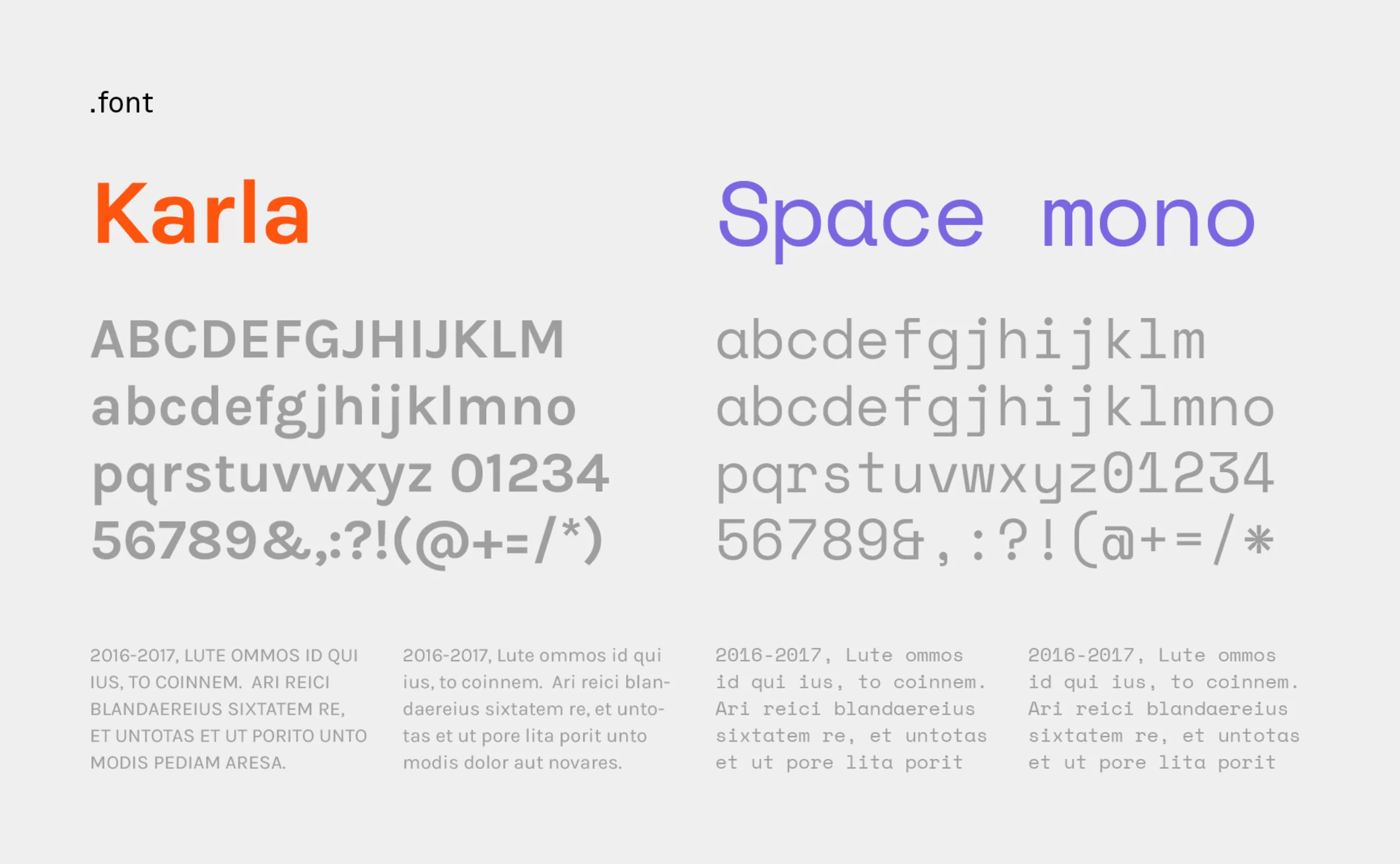
Brand architecture
Based on the principle of making code transparent, the graphic charter is designed to reveal all the tags and other CSS codes that are usually invisible. A solid orange colour becomes {Background-color: #ff530d}… For brand architecture, we propose a symbol for their different services. Engineering uses the symbols ‘{}’ associated with function programming, ‘</>’ for web solutions, ‘/… ’ to reveal the information systems tree structure, ‘[]’ which symbolises the “tables” where values are stored for the infrastructure service, and the ‘#’ for the e-business part.
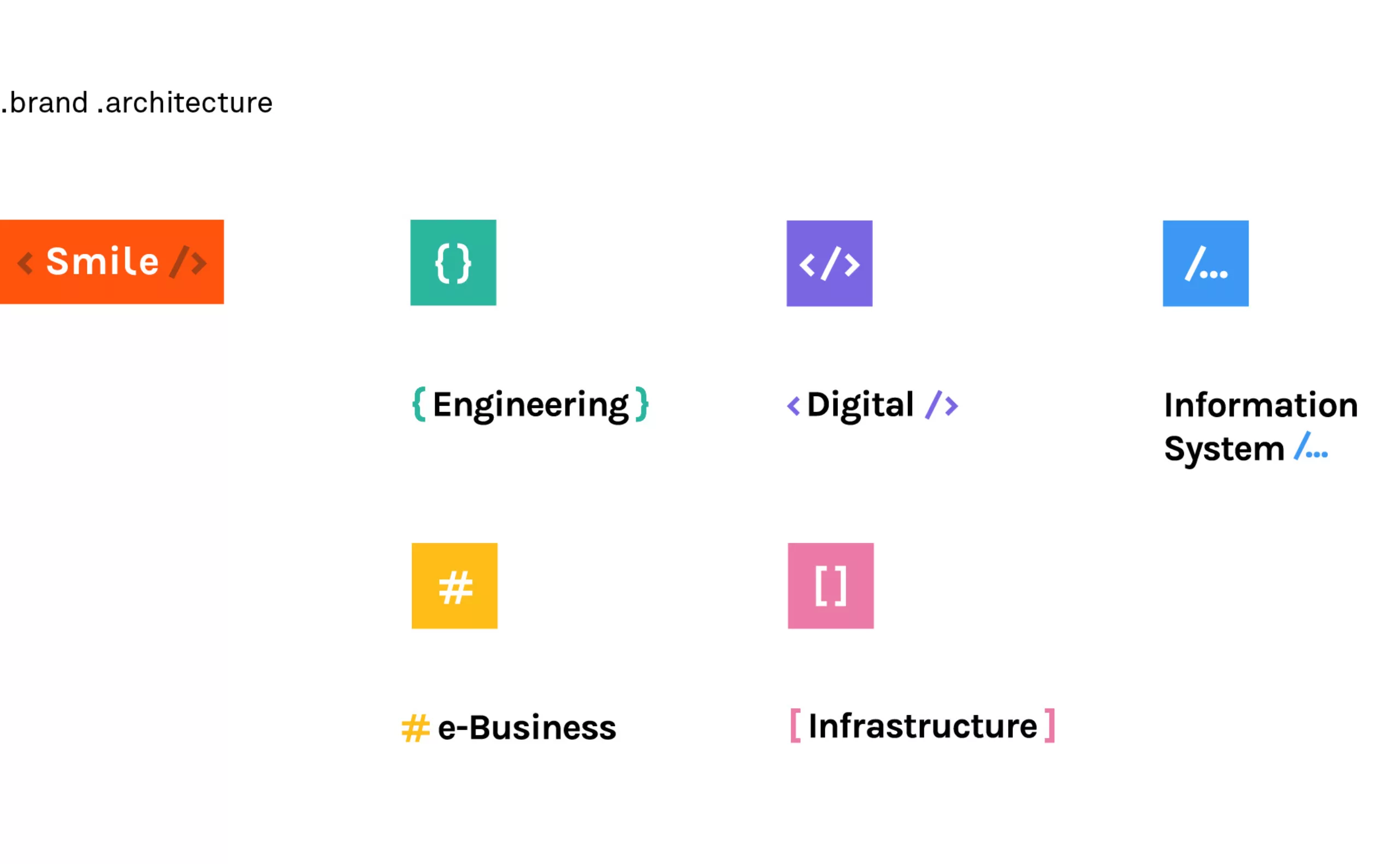
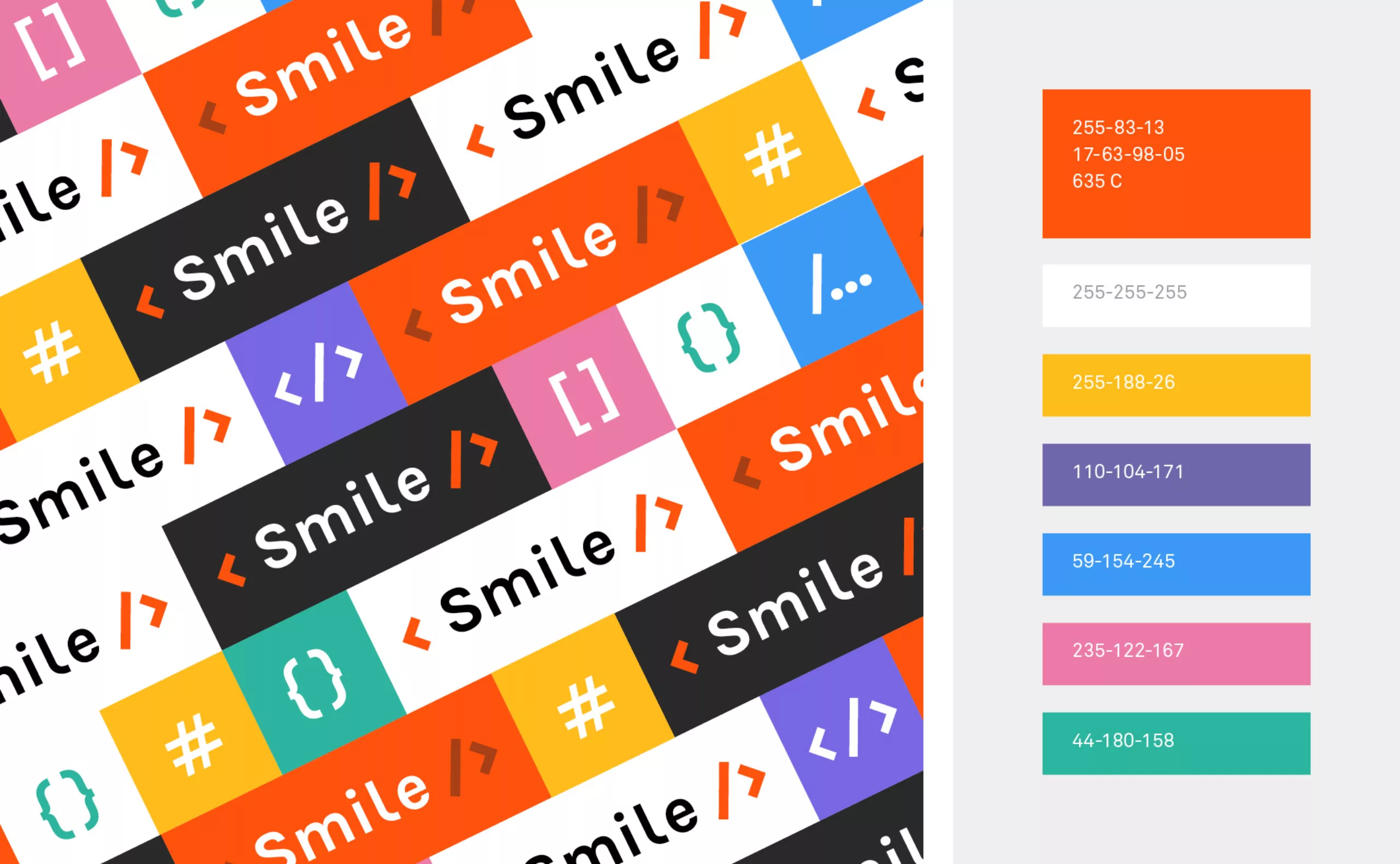

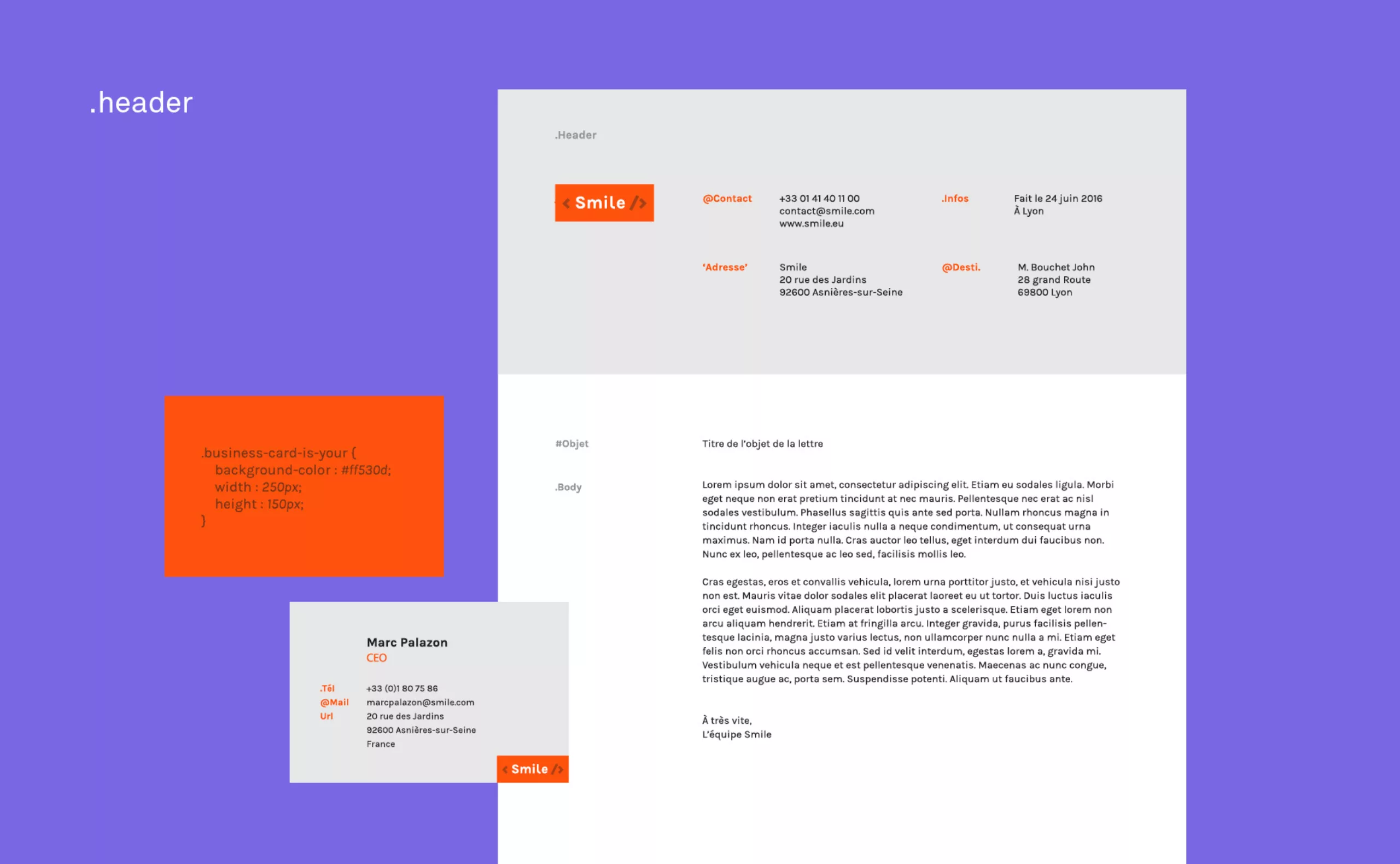
Tone of voice
Smile has long used humour in its communications. We propose to continue in this direction by integrating “code” into this editorial charter. For example, below, the ‘.em’ tag, which is supposed to encode italics in html, is integrated into the sentence “If you love someone set th.em free! “
White papers
Smile publishes a number of white papers on all subjects related to open source. The html code of the white paper being #ffffff… The collection becomes “Les livres #ffffff# !
